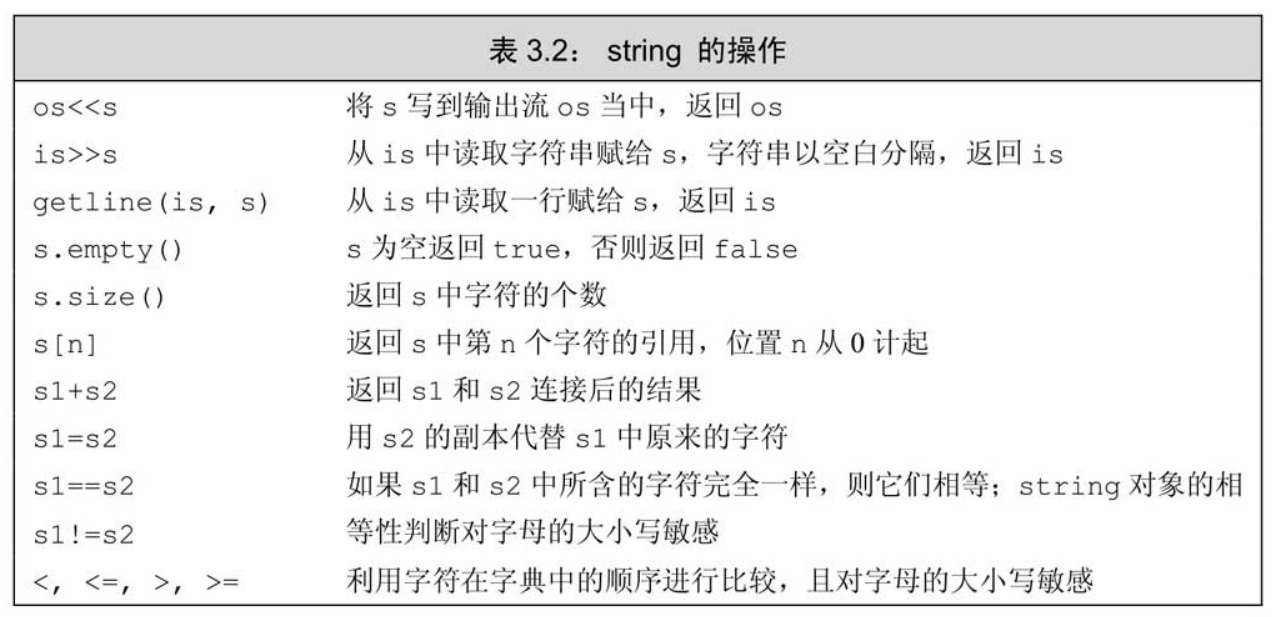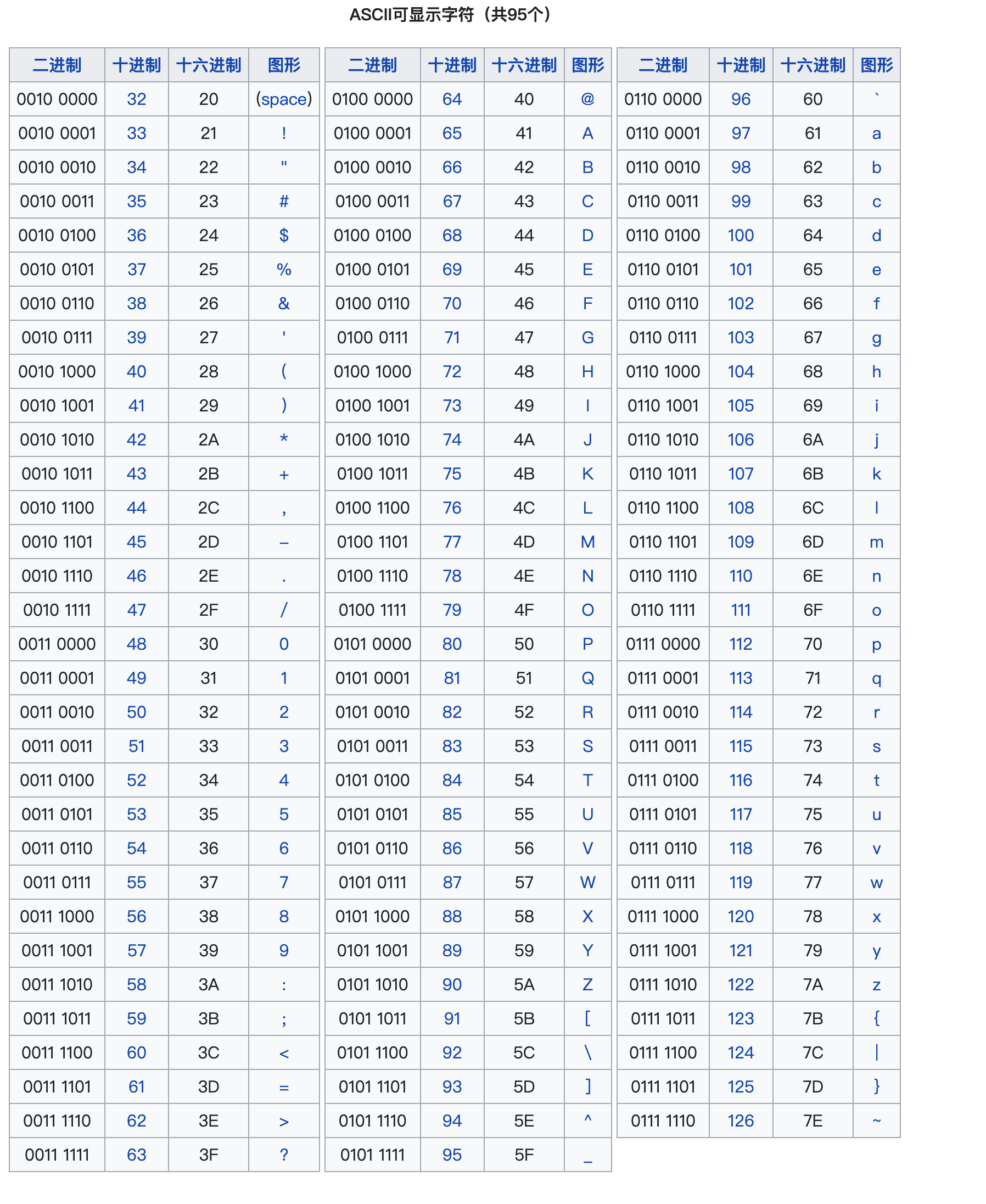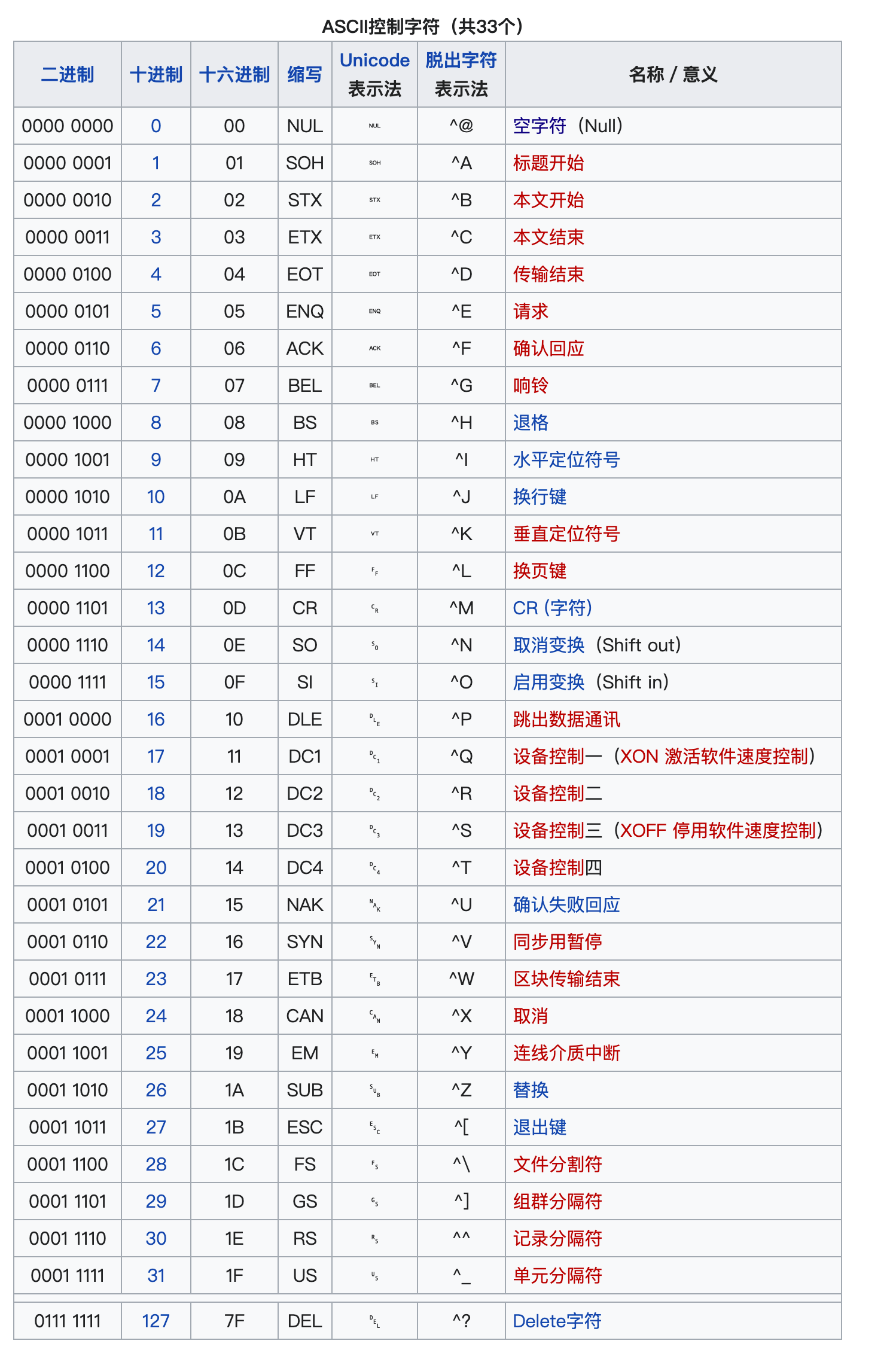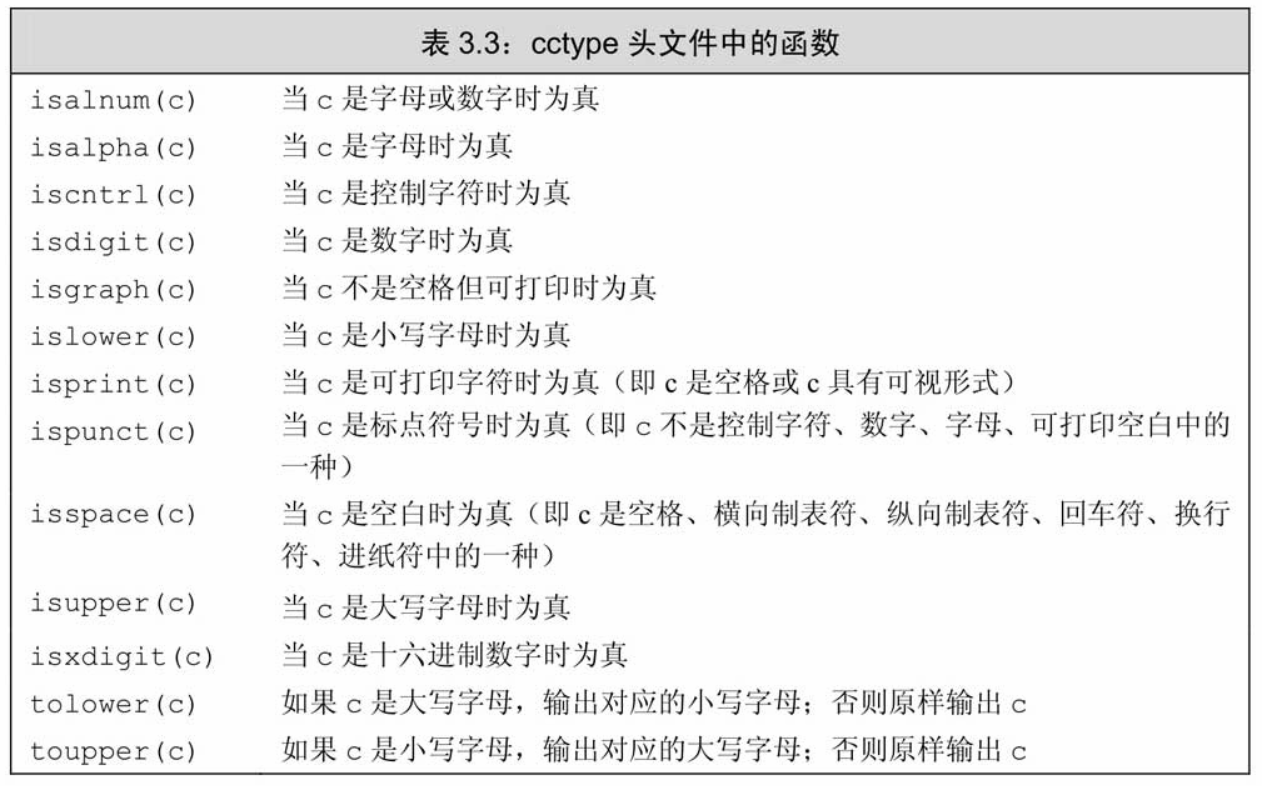1. 引言
什么是字符串?
字符串是由一系列字符组成的序列,用于表示文本信息。它在编程中被广泛应用于用户交互、文件处理、数据解析等场景。
C 风格字符串 vs std::string
在 C++ 中,有两种主要的字符串类型:
- C 风格字符串(C-strings):基于字符数组,以空字符 (
'\0') 结尾。 - C++
std::string类:更高级、功能更丰富的字符串类,封装了字符串操作的复杂性。
C 风格字符串示例:
char cstr[] = "Hello, World!";
std::string 示例:
#include <string>
std::string str = "Hello, World!";
2. std::string 基础
定义与初始化
std::string 是 C++ 标准库中的一个类,位于 <string> 头文件中。它封装了字符序列,并提供了丰富的成员函数用于操作字符串。
初始化有很多中方式,如下图
包含头文件:
#include <string>
初始化示例:
#include <iostream>
#include <string>
int main() {
// 默认构造函数
std::string str1;
// 使用字符串字面值初始化
std::string str2 = "Hello";
// 使用拷贝构造函数
std::string str3(str2);
// 使用部分初始化
std::string str4(str2, 0, 3); // "Hel"
// 使用重复字符初始化
std::string str5(5, 'A'); // "AAAAA"
std::cout << "str1: " << str1 << std::endl;
std::cout << "str2: " << str2 << std::endl;
std::cout << "str3: " << str3 << std::endl;
std::cout << "str4: " << str4 << std::endl;
std::cout << "str5: " << str5 << std::endl;
return 0;
}
输出:
str1:
str2: Hello
str3: Hello
str4: Hel
str5: AAAAA
字符串输入与输出
输出字符串:
#include <iostream>
#include <string>
int main() {
std::string greeting = "Hello, C++ Strings!";
std::cout << greeting << std::endl;
return 0;
}
从用户输入字符串:
#include <iostream>
#include <string>
int main() {
std::string input;
std::cout << "请输入一个字符串:";
std::cin >> input; // 读取直到第一个空白字符
std::cout << "您输入的字符串是:" << input << std::endl;
return 0;
}
读取包含空格的整行字符串:
#include <iostream>
#include <string>
int main() {
std::string line;
std::cout << "请输入一行文本:";
std::getline(std::cin, line);
std::cout << "您输入的文本是:" << line << std::endl;
return 0;
}
3. 字符串操作
常用的字符串操作如下:
3.1 拼接与连接
使用 + 运算符:
#include <iostream>
#include <string>
int main() {
std::string first = "Hello, ";
std::string second = "World!";
std::string combined = first + second;
std::cout << combined << std::endl; // 输出: Hello, World!
return 0;
}
使用 append() 函数:
#include <iostream>
#include <string>
int main() {
std::string str = "Hello";
str.append(", World!");
std::cout << str << std::endl; // 输出: Hello, World!
return 0;
}
使用 += 运算符:
#include <iostream>
#include <string>
int main() {
std::string str = "Data";
str += " Structures";
std::cout << str << std::endl; // 输出: Data Structures
return 0;
}
3.2 比较字符串
关于字符串的比较,其实是逐个位置按照字符比较,计算机中字符存储的方式是ASCII码表,每个字符对应一个ASCII码值,比较字符就是比较ASCII码值的大小
一些控制字符也是通过ASCII码存储的
使用 ==, !=, <, >, <=, >= 运算符:
#include <iostream>
#include <string>
int main() {
std::string a = "apple";
std::string b = "banana";
if (a == b) {
std::cout << "a 和 b 相等" << std::endl;
} else {
std::cout << "a 和 b 不相等" << std::endl;
}
if (a < b) {
std::cout << "a 在字典序中小于 b" << std::endl;
} else {
std::cout << "a 在字典序中不小于 b" << std::endl;
}
return 0;
}
输出:
a 和 b 不相等
a 在字典序中小于 b
3.3 查找与替换
使用 find() 查找子字符串:
#include <iostream>
#include <string>
int main() {
std::string text = "The quick brown fox jumps over the lazy dog.";
std::string word = "fox";
size_t pos = text.find(word);
if (pos != std::string::npos) {
std::cout << "找到 '" << word << "' 在位置: " << pos << std::endl;
} else {
std::cout << "'" << word << "' 未找到。" << std::endl;
}
return 0;
}
替换子字符串:
#include <iostream>
#include <string>
int main() {
std::string text = "I like cats.";
std::string from = "cats";
std::string to = "dogs";
size_t pos = text.find(from);
if (pos != std::string::npos) {
text.replace(pos, from.length(), to);
std::cout << "替换后: " << text << std::endl; // 输出: I like dogs.
} else {
std::cout << "'" << from << "' 未找到。" << std::endl;
}
return 0;
}
3.4 子字符串与切片
使用 substr() 获取子字符串:
#include <iostream>
#include <string>
int main() {
std::string str = "Hello, World!";
std::string sub = str.substr(7, 5); // 从位置7开始,长度5
std::cout << sub << std::endl; // 输出: World
return 0;
}
注意: 如果省略第二个参数,substr() 会返回从起始位置到字符串末尾的所有字符。
std::string sub = str.substr(7); // 从位置7开始直到结束
std::cout << sub << std::endl; // 输出: World!
4. 字符串的常用成员函数
4.1 长度与容量
获取字符串长度:
#include <iostream>
#include <string>
int main() {
std::string str = "C++ Programming";
std::cout << "字符串长度: " << str.length() << std::endl; // 输出: 14
// 或者使用 size()
std::cout << "字符串大小: " << str.size() << std::endl; // 输出: 14
return 0;
}
获取字符串容量:
每个 std::string 对象都有一个容量(capacity),表示它当前能够持有的最大字符数,而不需要重新分配内存。
#include <iostream>
#include <string>
int main() {
std::string str = "Hello";
std::cout << "初始容量: " << str.capacity() << std::endl;
str += ", World!";
std::cout << "追加后的容量: " << str.capacity() << std::endl;
return 0;
}
输出示例:
初始容量: 15
追加后的容量: 15
注意: 容量可能因实现而异,并不保证它等于长度。
4.2 访问字符
对字符串中的字符操作,有如下方法, 切记需包含
使用索引访问单个字符:
#include <iostream>
#include <string>
int main() {
std::string str = "ABCDE";
// 正向索引
for (size_t i = 0; i < str.length(); ++i) {
std::cout << "字符 " << i << ": " << str[i] << std::endl;
}
//反向遍历
for(int i = str.length() - 1; i >= 0 ; i --){
std::cout << "下标为 " << i << "的字符为" << str[i] << std::endl;
}
return 0;
}
使用 at() 函数(包含边界检查):
#include <iostream>
#include <string>
int main() {
std::string str = "ABCDE";
try {
char c = str.at(10); // 超出范围,会抛出异常
} catch (const std::out_of_range& e) {
std::cout << "异常捕获: " << e.what() << std::endl;
}
return 0;
}
输出:
异常捕获: basic_string::at: __n (which is 10) >= this->size() (which is 5)
4.3 转换大小写
C++ 标准库中的 std::toupper 和 std::tolower 可以用于转换字符的大小写。结合 std::transform,可以实现整个字符串的大小写转换。
转换为大写:
#include <iostream>
#include <string>
#include <algorithm>
#include <cctype>
int main() {
std::string str = "Hello, World!";
std::transform(str.begin(), str.end(), str.begin(),
[](unsigned char c) { return std::toupper(c); });
std::cout << str << std::endl; // 输出: HELLO, WORLD!
return 0;
}
转换为小写:
#include <iostream>
#include <string>
#include <algorithm>
#include <cctype>
int main() {
std::string str = "Hello, World!";
std::transform(str.begin(), str.end(), str.begin(),
[](unsigned char c) { return std::tolower(c); });
std::cout << str << std::endl; // 输出: hello, world!
return 0;
}
4.4 其他有用的函数
empty():检查字符串是否为空。std::string str; if (str.empty()) { std::cout << "字符串为空。" << std::endl; }clear():清空字符串内容。std::string str = "Clear me!"; str.clear(); std::cout << "str: " << str << std::endl; // 输出为空erase():删除字符串的部分内容。std::string str = "Hello, World!"; str.erase(5, 7); // 从位置5开始,删除7个字符 std::cout << str << std::endl; // 输出: Hello!insert():在指定位置插入字符串或字符。std::string str = "Hello World"; str.insert(5, ","); std::cout << str << std::endl; // 输出: Hello, Worldreplace():替换字符串的部分内容(前面已示例)。find_first_of(),find_last_of():查找字符集合中的任何一个字符。std::string str = "apple, banana, cherry"; size_t pos = str.find_first_of(", "); std::cout << "第一个逗号或空格的位置: " << pos << std::endl; // 输出: 5
5. 高级用法
5.1 字符串流(stringstream)
std::stringstream 是 C++ 标准库中第 <sstream> 头文件提供的一个类,用于在内存中进行字符串的读写操作,类似于文件流。
基本用法示例:
#include <iostream>
#include <sstream>
#include <string>
int main() {
std::stringstream ss;
ss << "Value: " << 42 << ", " << 3.14;
std::string result = ss.str();
std::cout << result << std::endl; // 输出: Value: 42, 3.14
return 0;
}
从字符串流中读取数据:
#include <iostream>
#include <sstream>
#include <string>
int main() {
std::string data = "123 45.67 Hello";
std::stringstream ss(data);
int a;
double b;
std::string c;
ss >> a >> b >> c;
std::cout << "a: " << a << ", b: " << b << ", c: " << c << std::endl;
// 输出: a: 123, b: 45.67, c: Hello
return 0;
}
5.2 字符串与其他数据类型的转换
将其他类型转换为 std::string:
使用
std::to_string():#include <iostream> #include <string> int main() { int num = 100; double pi = 3.14159; std::string str1 = std::to_string(num); std::string str2 = std::to_string(pi); std::cout << "str1: " << str1 << ", str2: " << str2 << std::endl; // 输出: str1: 100, str2: 3.141590 return 0; }
将 std::string 转换为其他类型:
使用字符串流:
#include <iostream> #include <sstream> #include <string> int main() { std::string numStr = "256"; std::string piStr = "3.14"; int num; double pi; std::stringstream ss1(numStr); ss1 >> num; std::stringstream ss2(piStr); ss2 >> pi; std::cout << "num: " << num << ", pi: " << pi << std::endl; // 输出: num: 256, pi: 3.14 return 0; }使用
std::stoi(),std::stod()等函数(C++11 及以上):#include <iostream> #include <string> int main() { std::string numStr = "256"; std::string piStr = "3.14"; int num = std::stoi(numStr); double pi = std::stod(piStr); std::cout << "num: " << num << ", pi: " << pi << std::endl; // 输出: num: 256, pi: 3.14 return 0; }
5.3 正则表达式与字符串匹配
C++ 标准库提供了 <regex> 头文件,用于支持正则表达式。
关于正则表达式的规则可以参考菜鸟教程文档https://www.runoob.com/regexp/regexp-syntax.html
基本用法示例:
#include <iostream>
#include <string>
#include <regex>
int main() {
std::string text = "The quick brown fox jumps over the lazy dog.";
std::regex pattern(R"(\b\w{5}\b)"); // 匹配所有5个字母的单词
std::sregex_iterator it(text.begin(), text.end(), pattern);
std::sregex_iterator end;
std::cout << "5个字母的单词有:" << std::endl;
while (it != end) {
std::cout << (*it).str() << std::endl;
++it;
}
return 0;
}
输出:
5个字母的单词有:
quick
brown
jumps
leazy
说明:
\b匹配单词边界。\w{5}匹配恰好5个字母的单词。
注意: 使用原始字符串字面值(R"()")以简化正则表达式的编写。
6. 字符串与 C 风格字符串的转换
6.1 从 C 风格字符串转换为 std::string
通过 std::string 的构造函数,可以轻松将 C 风格字符串转换为 std::string。
#include <iostream>
#include <string>
int main() {
const char* cstr = "Hello, C-strings!";
std::string str(cstr);
std::cout << str << std::endl; // 输出: Hello, C-strings!
return 0;
}
6.2 从 std::string 转换为 C 风格字符串
使用 c_str() 成员函数,可以获取 C 风格字符串指针。
#include <iostream>
#include <string>
int main() {
std::string str = "Hello, std::string!";
const char* cstr = str.c_str();
std::cout << cstr << std::endl; // 输出: Hello, std::string!
return 0;
}
注意: 返回的指针是只读的,且指向的内存由 std::string 管理,确保在 std::string 对象有效期间使用。
7. 示例项目
示例项目1:简易文本分析器
需求分析:
创建一个程序,接受用户输入的一段文本,并提供以下功能:
- 统计单词数量
- 统计每个单词出现的次数
- 查找指定单词的出现次数
- 输出最长的单词
代码实现:
#include <iostream>
#include <string>
#include <sstream>
#include <map>
#include <algorithm>
int main() {
std::string text;
std::cout << "请输入一段文本(结束请输入Ctrl+D/Ctrl+Z):\n";
// 读取整段文本
std::ostringstream oss;
std::string line;
while (std::getline(std::cin, line)) {
oss << line << " ";
}
text = oss.str();
// 使用字符串流分割单词
std::stringstream ss(text);
std::string word;
std::map<std::string, int> wordCount;
size_t totalWords = 0;
std::string longestWord;
while (ss >> word) {
// 去除标点符号(简单处理)
word.erase(std::remove_if(word.begin(), word.end(),
[](char c) { return ispunct(c); }), word.end());
// 转为小写
std::transform(word.begin(), word.end(), word.begin(), ::tolower);
if (!word.empty()) {
wordCount[word]++;
totalWords++;
if (word.length() > longestWord.length()) {
longestWord = word;
}
}
}
std::cout << "\n统计结果:\n";
std::cout << "总单词数: " << totalWords << std::endl;
std::cout << "每个单词出现的次数:\n";
for (const auto& pair : wordCount) {
std::cout << pair.first << ": " << pair.second << std::endl;
}
std::cout << "最长的单词: " << longestWord << std::endl;
// 查找指定单词的出现次数
std::string searchWord;
std::cout << "\n请输入要查找的单词: ";
std::cin >> searchWord;
// 转为小写
std::transform(searchWord.begin(), searchWord.end(), searchWord.begin(), ::tolower);
auto it = wordCount.find(searchWord);
if (it != wordCount.end()) {
std::cout << "'" << searchWord << "' 出现了 " << it->second << " 次。" << std::endl;
} else {
std::cout << "'" << searchWord << "' 未在文本中找到。" << std::endl;
}
return 0;
}
运行示例:
请输入一段文本(结束请输入Ctrl+D/Ctrl+Z):
Hello, world! Hello C++.
This is a simple text analyzer. Analyzing text is fun.
统计结果:
总单词数: 10
每个单词出现的次数:
hello: 2
world: 1
c: 1
this: 1
is: 2
a: 1
simple: 1
text: 2
analyzer: 1
analyzing: 1
fun: 1
最长的单词: analyzer
请输入要查找的单词: text
'text' 出现了 2 次。
代码解析:
- 读取用户输入的文本:使用
std::ostringstream和std::getline读取用户输入的多行文本,直到用户输入结束(Ctrl+D 或 Ctrl+Z)。 - 分割单词并统计:
- 使用
std::stringstream将文本分割为单词。 - 使用
std::map存储每个单词出现的次数。 - 计算总单词数和最长单词。
- 使用
- 查找指定单词:用户输入要查找的单词,程序查找并输出出现次数。
示例项目2:用户输入验证工具
需求分析:
编写一个程序,接受用户输入的电子邮件地址,并验证其格式是否正确。简单的验证标准:
- 包含一个
@符号 @后面有一个.符号- 不包含空格
代码实现:
#include <iostream>
#include <string>
#include <regex>
bool isValidEmail(const std::string& email) {
// 简单的正则表达式,匹配基本的邮件格式
const std::regex pattern(R"((\w+)(\.?\w+)*@(\w+)(\.\w+)+)");
return std::regex_match(email, pattern);
}
int main() {
std::string email;
std::cout << "请输入您的电子邮件地址: ";
std::cin >> email;
if (isValidEmail(email)) {
std::cout << "电子邮件地址有效。" << std::endl;
} else {
std::cout << "电子邮件地址无效。" << std::endl;
}
return 0;
}
运行示例:
请输入您的电子邮件地址: user@example.com
电子邮件地址有效。
请输入您的电子邮件地址: userexample.com
电子邮件地址无效。
代码解析:
- 定义验证函数
isValidEmail:- 使用正则表达式
(\w+)(\.?\w+)*@(\w+)(\.\w+)+来匹配基本的邮箱格式。 - 该正则表达式匹配如下部分:
- 用户名部分:由字母数字字符组成,可以包含点号。
@符号。- 域名部分:由字母数字字符组成,至少包含一个点号后跟字母数字字符。
- 使用正则表达式
- 主函数:
- 提示用户输入邮箱地址。
- 调用
isValidEmail函数进行验证,并输出结果。
注意: 这个正则表达式只是一个基础的验证,实际应用中可能需要更复杂的正则表达式来处理更多的邮件格式。







